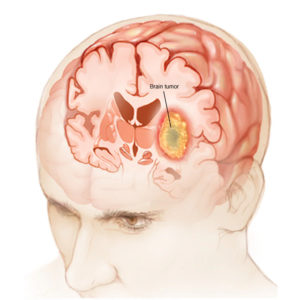Tumors in the central nervous system (CNS) range from benign to malignant. While benign tumors are noncancerous and do not spread, malignant tumors are cancerous and have spread or will eventually spread.
Since benign tumors are well defined with visible boundaries and grow slowly, surgical methods can help. Abnormal growths like tumors in our CNS are painful because the growths push nerves against bony appendages, causing pain. This impairs tissue function as well.
Knowing the tumor’s origin can provide some relief. Tumors that originate in the CNS itself are primary tumors that are either hereditary or they develop from abnormal and excessive cell growth on surrounding nerves. Additionally, radioactive rays and chemicals can also cause primary tumors.
Tumors that originate elsewhere in the body are called metastatic tumors. These indicate that some other body part has extracted cancer cells and growth—most commonly in the lungs.
What Are The Symptoms of Brain and Spinal Tumors
Brain and spine tumor symptoms are wide-ranging and include:
- Nausea
- Vomiting
- Impaired vision
- Impaired hearing
- Seizures
- Headaches
- Loss of balance
- Impaired motor functions and skills
- Weakened cognition
- Behavioral issues
- Weakness and fatigue
- Issues in the bladder and bowels
- Extremity sensation loss
How Is A Brain and Spinal Tumors Diagnosed?
At Houston Neurosurgery & Spine, we diagnose brain and spine tumors through neurological examination, special imaging, or other testing procedures that may include:
- MRI (magnetic resonance imaging)
- CT scan (computed tomography)
- PET scan (positron-emission tomography)
- EEG (electroencephalogram)
- Spinal tap
Kinds of Brain and Spine Tumor
Some of the common brain and spine tumors include:
- Glioblastoma multiforme (GBM)
- Meningiomas
- Acoustic neuromas
- Pituitary adenomas
- Cranial extensions of head and neck cancers
What Are The Treatment Options For A Brain and Spinal Tumors
Tumor Removal and Craniotomy
Our surgeons may perform a craniotomy procedure to remove some tumors. We find that this is especially effective in treating benign tumors.
Using high-tech intraoperative images to guide us, we employ a minimal access neurosurgical approach to ensure that the incisions made are as minuscule as possible.
Surgical safety and precision matter most to us. For example, we use real-time intraoperative MRI for optimal precision and to reduce the risk of the tumor spreading.
Our minimal access approaches help us increase our surgical precision, minimize our patient’s hospital stay, and allow our patients to recover much faster.
Neuroendoscopy
Neuroendoscopy is a surgical procedure where tumors in far-reaching and deep regions in the brain and the cranium are removed through small, dime-sized holes in the patient’s skull or through the mouth or nose. As an alternative to traditional surgery, this surgical approach uses endoscopes and surgical microscopes so the incision site is minute. Neuroendoscopy also creates minimal trauma to surrounding tissues, shortening the patient’s hospital stay.

